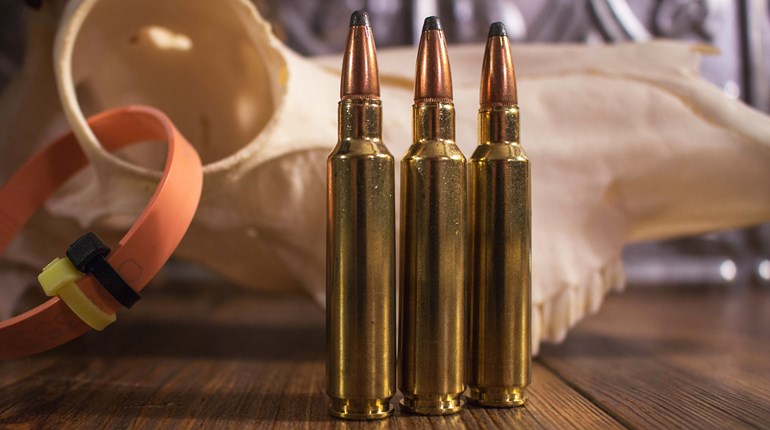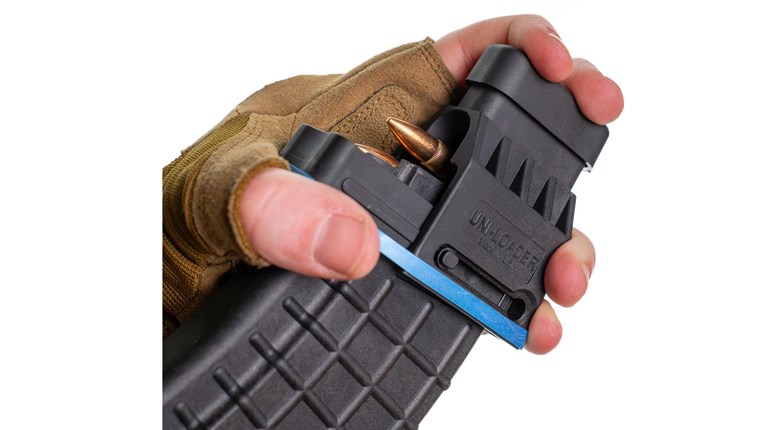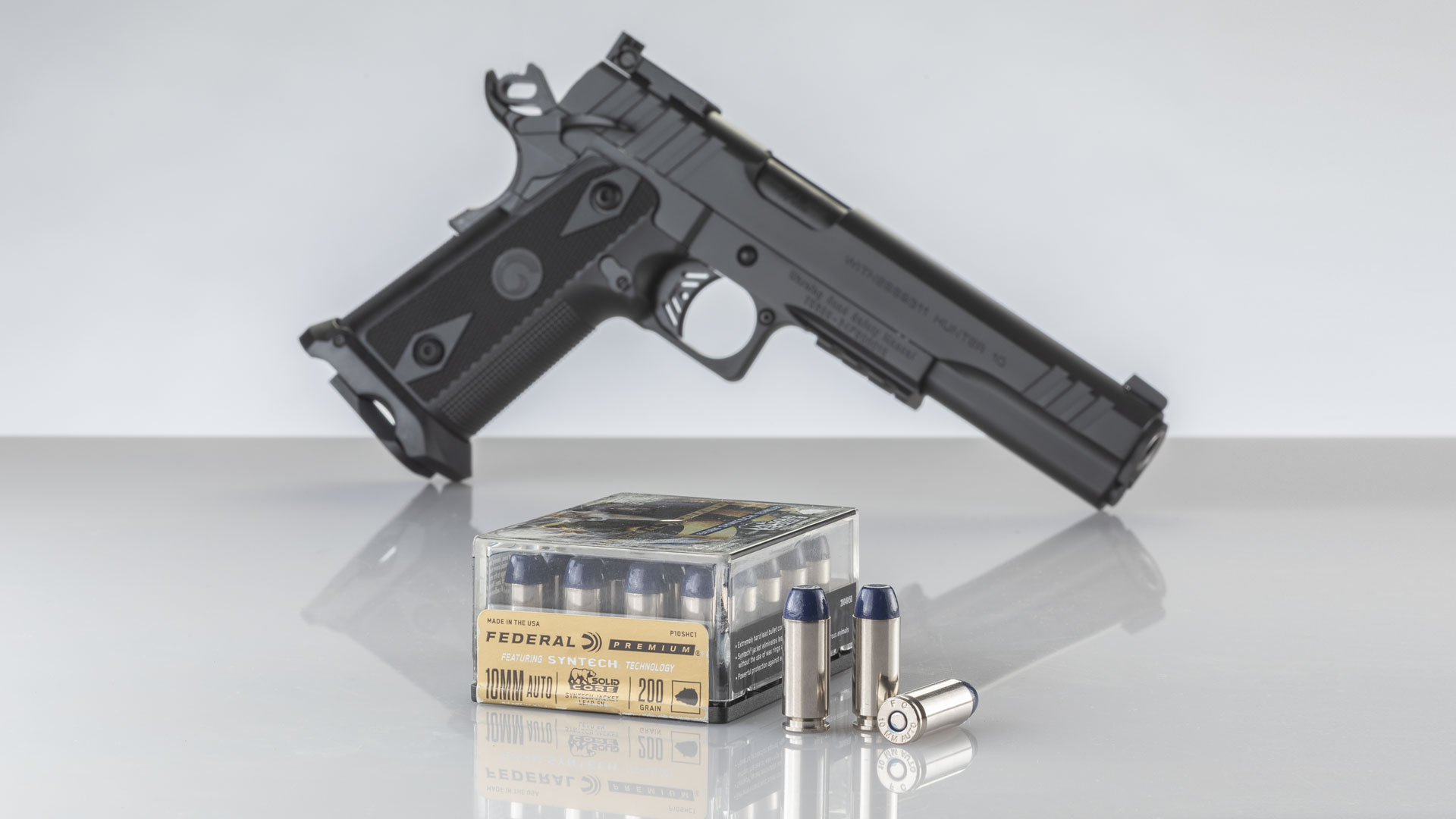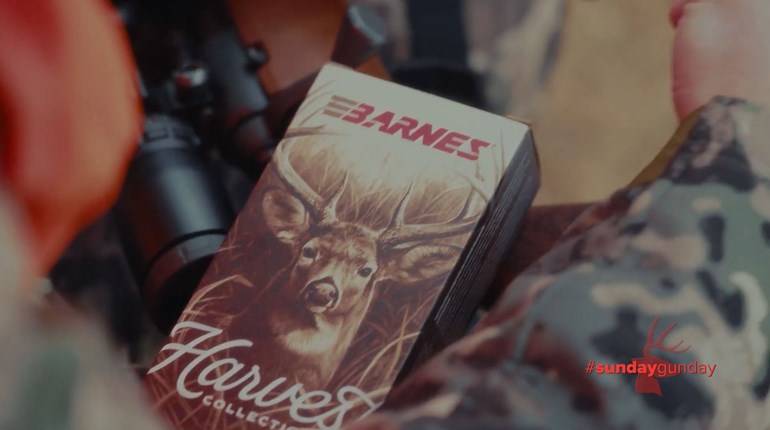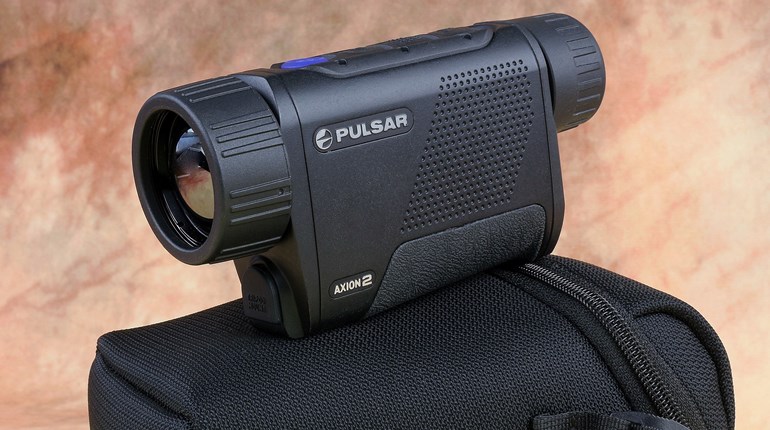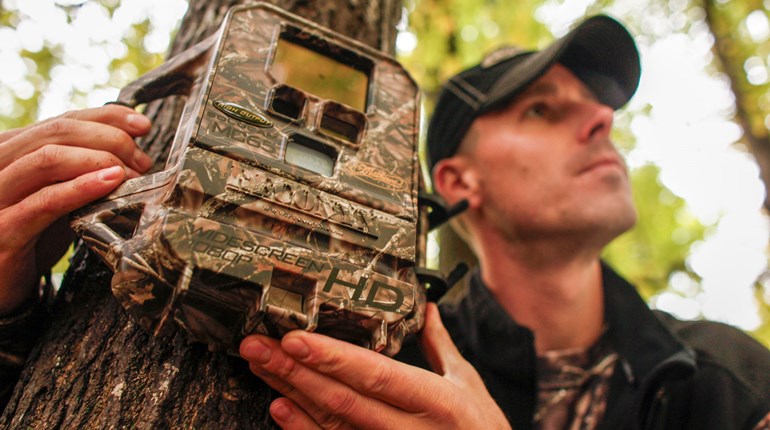
Ah, boy. I get this one a lot from different ammunition customers, as well as those looking for the consummate rifle to do it all. I’d have thought that by now—some 56 years after the introduction of the .308 Winchester as a sporting round—the feud would have settled down, but it certainly doesn’t look that way. I think this may be the one of the most heated debates in firearms history, and seemingly without much cause, as the two cartridges are very similar in performance levels. However, each camp has an army, and rocks continue to be hurled across the front lines.
The .30-06 Springfield is, undoubtedly, the American darling. It has proven its value on the battlefield as well as in the game fields for well over a century, and earned its place in the annals of cartridge history. It has been used—with varying degrees of success—on every species of game animal that walks the earth. One of the secrets of its success is the fact that it offers quite a bit of bullet weight and killing power without beating the snot out of the shooter. Born for war, it brought the American Military into the modern era, delivering sleek spitzer bullets for the first time, and definitely increasing the effective range of the shoulder-fired weapon. It shows its heritage—sharing the same case head design as the 7x57mm Mauser—but uses a 63mm case length. The first incarnation, the .30-03 Springfield, used the same heavy, round-nosed bullets as the .30-40 Krag (our previous military cartridge), but was quickly revised to the good old .30-06 we all know and love. It was adored by Roosevelt, Hemingway, Fitz and may other early hunters who inspired our grandfathers, and remains a perfectly sound choice as a hunting cartridge today. It works so well it’s almost boring.

The .308 Winchester was born from the idea that modern (late 1940s) smokeless powder would generate the same velocities from a shorter cartridge. Shorter equals not only lighter, but a cartridge that requires less raw materials to produce. The soldier could carry more ammunition, and the field results were so close that the Army felt it worth the time. Experimentation began with the .300 Savage cartridge, but the final incarnation was the 7.62x51mm NATO, released to the sporting public in 1952 (two years prior to military adoption) as the .308 Winchester. It was hailed as a shorter version of the .30-06, and immediately started a cartridge war.
Both cartridges use the same .308″ diameter bullets, and both have a case capacity large enough to push those bullets to sensible, useable velocities. Those who swore allegiance to the .30-06 pointed out the slight velocity advantage that the larger case offers, and how it handles the heavier bullets so much better. Those in favor of the new-kid-on-the-block pointed out how much lighter the shorter action rifles were, as well as the fact that the shorter action offered better rigidity, and therefore a better level of accuracy. The .308 Winchester was offered with a 1:12″ twist rate barrel (as opposed to the Springfield’s usual 1:10″) and wouldn’t stabilize the long 220-grain bullets. While I have used those heavyweights, in my .300 Winchester Magnum, I really don’t know too many people who hunt with the 220s anymore.
My Dad joined the National Guard in 1968, and with an M14 in his hands at Ft. Leonard Wood, Missouri, was hitting human silhouettes at 350 meters with iron sights. He was sold on the .308 Winchester before I was conceived, and in my house, there was but one cartridge, and all else was nonsense. I had friends whose fathers were equally adamant about the Springfield, having given testimony that the shots they made would have resulted in failure if they had any other rifle in hand. Personally, I began my career with a .30-30 Winchester in hand, and I couldn’t see the difference between the .308 and .30-06, at least on deer. Both killed a deer quickly and effectively, and other than one being longer, the field results were inconsequential.

So what’s the big deal? What are the real differences between the two highly respectable .30s? Well, each has come to be the basis for its respective action-length, with the .308 case measuring 2.015″, and the .30-06 measuring 2.494″. The .30-06 does have a definite velocity advantage, bettering the .308’s velocity by about 100-125 fps. Does that translate into a decided advantage in the field? No, no it doesn’t. Does the difference in action length actually make a difference in speed of a follow up shot? Not in my experiences. I’ve used short, long and magnum-length actions all over the world, and none of them have ever posed a handicap, at least not to me. It’s kind of funny, as many in the hunting crowd tout the .30-06 as the better choice for its velocity advantage, yet the precision shooting crowd routinely depends on the .308 Winchester as a 1,000-yard cartridge, and few are taking the Springfield out that far anymore.
Both cartridges are available in many guises; almost every single ammunition manufacturer produces both. With the exception of the truly heavy bullets, both can effectively drive bullets from 125 grains to 200 grains. How does a hunter choose?
 The recoil is no mitigating factor, as both are very manageable, even if the Springfield has been historically a bit snappier. Neither has ever been bothersome, even during extended periods at the bench. Cost is not an issue either, as the two are similar in price, with the .308 being (a bit) more affordable. Both cartridges are economical to shoot. If you feel that you are the kind of hunter who would enjoy using one cartridge for all sorts of game, I suppose the .30-06 would make a better choice, as the really heavy bullets are better for large bears, though I personally feel there are better bore diameters for those creatures. They are both very accurate cartridges; and I’ve seen both give fantastic accuracy, as well as some rifles that just wouldn’t shoot.
The recoil is no mitigating factor, as both are very manageable, even if the Springfield has been historically a bit snappier. Neither has ever been bothersome, even during extended periods at the bench. Cost is not an issue either, as the two are similar in price, with the .308 being (a bit) more affordable. Both cartridges are economical to shoot. If you feel that you are the kind of hunter who would enjoy using one cartridge for all sorts of game, I suppose the .30-06 would make a better choice, as the really heavy bullets are better for large bears, though I personally feel there are better bore diameters for those creatures. They are both very accurate cartridges; and I’ve seen both give fantastic accuracy, as well as some rifles that just wouldn’t shoot.
This is one of those situations where I feel it’s as close to a dead heat as you’re going to get. Within the normal range of bullets, I doubt any game animal would be able to notice the difference between the two. Each has clearly proven itself, and will continue to do so, with improvements in powders and bullet technology making this great pair of cartridges even better. The .308 Winchester certainly doesn’t look like a long-range cartridge, though it can certainly handle shots out to ethical distances. W.D.M. ‘Karamojo’ Bell, the famous elephant hunter who was a proponent of the 7x57 for the pachyderms, stated the shorter bolt throw would have made the .308 Winchester the best elephant cartridge ever. Compare that to the impeccable reputation and nostalgia that comes with the Springfield case, and you’ve got a tough choice.
I was raised on the .308 Winchester, and I’ve used one for a quarter-century on deer, bear and other game. I’ve also used the .30-06 Springfield on some rather tricky shots on game from deer to red stag. I like them both. I have—to be completely honest—mated my .308 with a .300 Winchester Magnum, so the case could be made that I didn’t ask the shorter case to work very hard.
This one is nearly too close to call, but I’m going to give the (very slight) edge to the .30-06 Springfield, based on one factor alone: the additional case capacity. I know that as a handloader, I’ve had to work with some highly compressed loads in the .308 to get what I wanted, and the roomier Springfield case does make life easier. That said, I’m not giving up my .308 any time soon, but I do feel comfortable saying that as far as a hunting cartridge goes, the design of 1906 is about as close to perfection as it gets.
Looking for previous installments of our "Head to Head" series? We've got you covered.
• .22 Nosler vs. .224 Valkyrie
• .300 Win. Mag. vs. .300 WSM
• .223 Remington vs. .22-250 Remington












